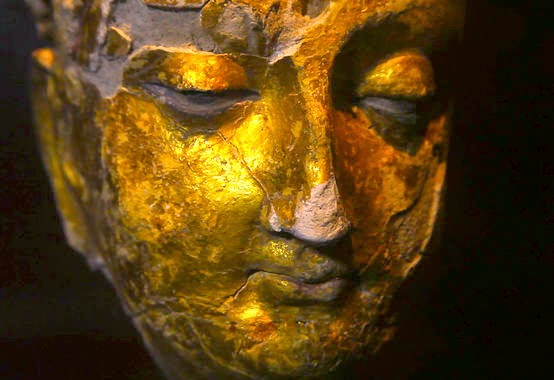Wednesday, November 26, 2014 -  ar-Raqqa,ar-Raqqah,DGAM,Museum damage,Rakka,Raqqa,Syria
ar-Raqqa,ar-Raqqah,DGAM,Museum damage,Rakka,Raqqa,Syria
 5 comments
5 comments
 ar-Raqqa,ar-Raqqah,DGAM,Museum damage,Rakka,Raqqa,Syria
ar-Raqqa,ar-Raqqah,DGAM,Museum damage,Rakka,Raqqa,Syria
 5 comments
5 comments
Ar-Raqqah Museum in Syria continues to Suffer
 Yesterday a report came in from the Syrian Arabic Republic - Ministry of Culture's Directorate General of Antiquities and Museums (DGAM) that a bomb dropped in Raqqa (ar-Raqqa, ar-Raqqah, Raqqa, Rakka), Syria near Arafat Square has done structural damage to the main facades of the Ar-Raqqah Museum as well as damage to the doors, shutters and windows. To outline the damages we have included photos of the museum prior to and after this bomb strike.
Yesterday a report came in from the Syrian Arabic Republic - Ministry of Culture's Directorate General of Antiquities and Museums (DGAM) that a bomb dropped in Raqqa (ar-Raqqa, ar-Raqqah, Raqqa, Rakka), Syria near Arafat Square has done structural damage to the main facades of the Ar-Raqqah Museum as well as damage to the doors, shutters and windows. To outline the damages we have included photos of the museum prior to and after this bomb strike.  This only adds insult to the already identified injury. Previously DGAM reported that in Spring 2012 an armed group called Ahar al Sham had moved 527 artefacts under the pretext of protecting them.
This only adds insult to the already identified injury. Previously DGAM reported that in Spring 2012 an armed group called Ahar al Sham had moved 527 artefacts under the pretext of protecting them.
Then in June 2013 robbers seized an additional six containers that had been previously stored in the Raqqa Museum’s warehouse. Through cooperation and negotiations with members of the local community three of these boxes were later identified in Tabaqa under the control of a group called “Cham free people”. While the found boxes contained 104 artifacts ARCA hasn't been able to ascertain which pieces from the inventory were recovered.
A report of the archaeological heritage in Syria during the crisis from 2011 through early 2013 written by Professor Dr Maamoun Abdulkarim, General Director of Syria's Ministry of Culture can be read here. The 2013 report is available here.
The Museum of Raqqa was founded in 1981 and has been primarily dedicated to the preservation and exhibition of cultural heritage gathered from excavation research from the Ar-Raqqah province. Its collection includes objects from Tell Bi’a, Tell Munbaqa, Tell Sabi Abyad, and Tell Chuera, and includes artefacts that date from Roman and Byzantine eras as well as objects from the Islamic period (the epoch of Haroun al-Rachid) and from the period of more recent Bedouin domination.
Situated in north-central Syria near to where the Balikh River joins the Euphrates the city of Raqqa once dominated the northwest corner of the heartland of the Islamic Empire precisely because it was a major stopover point for those traveling through the Syrian desert to other important cities in the region making it integral for commerce. Because of this strategic location Raqqa has always been hotly contested throughout its lifespan, perhaps now more than ever. L. Albertson, ARCA CEO
The Museum of Raqqa was founded in 1981 and has been primarily dedicated to the preservation and exhibition of cultural heritage gathered from excavation research from the Ar-Raqqah province. Its collection includes objects from Tell Bi’a, Tell Munbaqa, Tell Sabi Abyad, and Tell Chuera, and includes artefacts that date from Roman and Byzantine eras as well as objects from the Islamic period (the epoch of Haroun al-Rachid) and from the period of more recent Bedouin domination.
Situated in north-central Syria near to where the Balikh River joins the Euphrates the city of Raqqa once dominated the northwest corner of the heartland of the Islamic Empire precisely because it was a major stopover point for those traveling through the Syrian desert to other important cities in the region making it integral for commerce. Because of this strategic location Raqqa has always been hotly contested throughout its lifespan, perhaps now more than ever. L. Albertson, ARCA CEO










